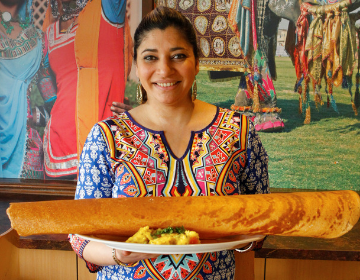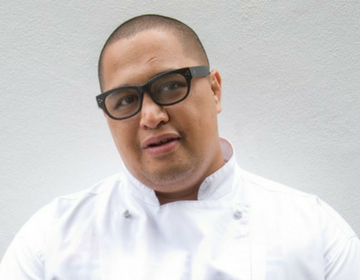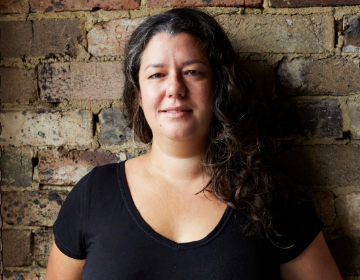We spoke with Head Chef of Treasury 1860, Nick Filsell about his experimentation with food from different cultures and how being exposed to different cultures has evolved his cooking styles and recipes.
You’re well known for your Bahn Mi pizza, what is it about experimenting with food from different countries that excites you?
It’s so exciting because exposure to different techniques and flavours and combining them in other mediums that they’re not typically associated with can result in some incredible flavours and dishes.
The Bahn Mi pizza is a perfect example of that. There’s no reason why Bahn Mi ingredients and flavours won’t work on a pizza, but people just haven’t thought of taking that one cultural food or flavour and putting it on the classical base of another.
Do you have any cultural food mash ups that didn’t go to plan?
I have a couple of those, when you’ve been cooking for a long time you actually have more failures than success… the public just don’t see them!
I have been experimenting with chocolate and chilli recently – a combination which originates from South America and it’s the closest I’ve come to an absolute disaster! I’ve refined it however to get it right. I’ve seen people use it in savoury dishes such as lobster and kangaroo because it’s made with bitter chocolate, so I can’t wait to try incorporating it into some dishes.
What’s the weirdest food combo you’ve tested that tasted amazing, but you thought it wouldn’t?
I’d have to say mango and green pepper corn sauce. It’s currently on the menu at my restaurant with prawn, crab and cucumber marinated in sesame and soy sauce. So many people look at it and go ‘what? Savoury and sweet? How will that work?’ But then they taste it and go “Oh my God,” because they unexpectedly work so well together.
I actually came across the sauce from a book I was given as a gift and read as an apprentice chef. I was so intrigued by it and over the years have whipped it out here and there and now it’s on my menu!
You’ve picked up a lot from your travels, but have you discovered any new cooking techniques or recipes from the diverse culture in Australia?
Absolutely, once you get to a stage in your career, you kind of transcend style. I don’t want to say I’m a specialist in one type of cuisine because there’s just so much to explore.
In Australia there’s so many ingredients to choose from because we have such a multicultural society. I’m still learning things myself, particularly about Asian cuisine. I often go to Asian grocery stores and buy things that I have no clue what they are, what they’re used for or how to cook with them. I then do research, ask friends and colleagues which can be pretty funny sometimes when I buy something very odd like jellied pig’s ears, which surprisingly are very tasty! I also once came across jellyfish which I now use from time to time in salads.
You’ve worked all across Australia including at Uluru, did you pick up any unique bush tucker techniques that you’ve incorporated into your cooking?
We touched on it while I was working in Uluru because tourists want that outback experience, but we didn’t want to become a cliché. I actually learnt more about bush tucker and native Australian ingredients working at Red Ochre Grill in SA.
To me, I don’t even think of the ingredients now as ‘native ingredients’ they’re just part of my repertoire. I’ll often suggest adding something like lemon myrtle for a dish and other people will say ‘wait what?’ But to me it’s just one of the standard ingredients I use now.
What is it about food that brings people together?
The culture of the table is an open, engaging and sharing environment, around food is the best place to start conversation. ‘What do you like to eat?’, ‘How’d you make that?’, ‘Try this!’.
Food brings everyone together because it’s so relatable – everyone eats. It’s an easy conversation starter that can lead to learning more about people, because everyone knows something about food, even if it’s just what they like to eat.
Why should workplaces get involved in A Taste of Harmony?
It’s a really socially inclusive and non-judgemental way to celebrate cultural diversity in the workplace. It breaks barriers because it allows people to share food and open that conversation about diversity.
It also breaks barriers because many people have preconceived notions about what foods from different cultures are. For example, Chinese food from a restaurant may be quite different than what’s cooked in a traditional Chinese household. It’s about people’s everyday life, and how what they eat is a window into their culture. The sharing of food is the way through that window to learn more about others and their culture.
Click here to learn more about A Taste of Harmony and how your workplace can register to get involved.
Nick Filsell is Head Chef at Treasury 1860 and Director at Lost in a Forest.

























